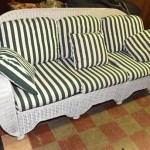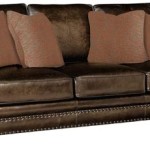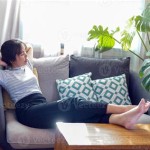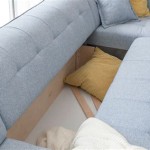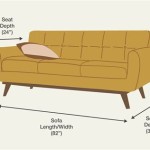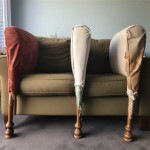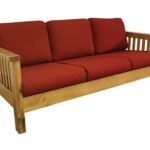Round Sofa Sectionals: A Comprehensive Guide
Round sofa sectionals represent a significant departure from traditional linear seating arrangements. Characterized by their curved or circular forms, these pieces offer a unique aesthetic that can dramatically alter the ambiance and functionality of a living space. This article provides a comprehensive overview of round sofa sectionals, exploring their design considerations, material options, spatial implications, and maintenance requirements.
The growing popularity of round sofa sectionals reflects a broader trend toward prioritizing comfort and social interaction in home design. Unlike conventional sofas that often dictate a rigid layout, round sectionals promote inclusivity and encourage conversation. Their inherent curvature creates a natural focal point, fostering a more intimate and welcoming atmosphere.
The selection of a round sofa sectional necessitates careful consideration of several factors, including room size, style preferences, and intended usage. A poorly chosen sectional can overwhelm a small space or clash with existing décor. Conversely, a well-selected round sectional can become the centerpiece of a room, enhancing its visual appeal and functionality.
Design Considerations for Round Sofa Sectionals
The design of a round sofa sectional is multifaceted, encompassing shape, size, configuration, and aesthetic details. While the fundamental characteristic is the curved or circular form, variations exist in the degree of curvature, the presence of modular components, and the overall footprint. The selection of a particular design hinges on the spatial constraints and aesthetic goals of the room.
One crucial decision involves the choice between a single, fixed-curvature sectional and a modular design. Fixed-curvature sectionals offer a seamless, unified appearance but lack flexibility in terms of arrangement. Modular sectionals, comprised of individual segments that can be rearranged, provide greater adaptability to changing needs and spatial configurations. These individual segments can be combined to create different shapes, such as a full circle, a semicircle, or an S-curve.
The size of the round sofa sectional is another critical consideration. In a small room, an oversized sectional can create a sense of clutter and impede movement. Conversely, a too-small sectional may appear inadequate in a large, open-concept space. Accurate measurements of the available space are essential to ensure that the chosen sectional fits comfortably and proportionally.
The depth and height of the sectional also contribute to its overall comfort and visual impact. A deeper sectional allows for more relaxed lounging, while a higher back provides additional support. The choice of depth and height should be aligned with the intended usage of the sectional and the preferences of the users.
Aesthetic details, such as the style of the legs, the type of stitching, and the presence of tufting or other embellishments, further contribute to the overall design. These details should complement the existing décor of the room and reflect the desired style aesthetic, whether it be modern, traditional, or eclectic.
Considerations must also be given to the placement of the sectional in the room. Round sectionals often work best when centered in a space, allowing for circulation around the piece. This creates a focal point and encourages a more social atmosphere. However, in some cases, a round sectional can be placed against a wall, particularly if the room is smaller or if a more defined seating area is desired.
Material Options for Round Sofa Sectionals
The choice of materials significantly impacts the durability, comfort, and aesthetic appeal of a round sofa sectional. Upholstery fabrics, frame construction, and cushioning materials all contribute to the overall quality and longevity of the piece. Careful consideration of these materials is essential to ensure that the sectional meets the specific needs and preferences of the user.
Upholstery fabrics are available in a wide range of options, each with its own distinct characteristics. Natural fibers, such as cotton, linen, and wool, offer breathability and a soft, comfortable feel. However, they may be more susceptible to staining and wear than synthetic fibers. Synthetic fabrics, such as polyester, microfiber, and acrylic, are generally more durable, stain-resistant, and affordable. Blended fabrics, which combine natural and synthetic fibers, offer a balance of comfort and durability.
Leather upholstery provides a luxurious and durable option. Leather is naturally resistant to wear and tear, and it develops a patina over time, enhancing its character. However, leather requires regular conditioning to prevent cracking and drying. Faux leather, also known as leatherette or vinyl, offers a more affordable alternative to genuine leather. Faux leather is typically more stain-resistant and easier to clean than genuine leather, but it may not be as breathable or durable.
The frame construction of the sectional determines its structural integrity and longevity. Solid hardwood frames, such as those made from oak, maple, or birch, provide the greatest durability and stability. Engineered wood frames, such as plywood or particleboard, offer a more affordable alternative, but they may not be as strong or durable as solid hardwood. The frame should be securely joined and reinforced to prevent warping or breakage.
Cushioning materials contribute significantly to the comfort of the sectional. Foam cushions, made from polyurethane or memory foam, provide support and resilience. Down cushions, made from feathers and down, offer a softer, more luxurious feel. Fiberfill cushions, made from polyester fibers, are a more affordable alternative to down. The density of the foam, the ratio of feathers to down, and the type of fiberfill all influence the comfort and support of the cushions.
In addition to the primary materials, other components, such as springs, webbing, and padding, also contribute to the overall quality of the sectional. High-quality springs and webbing provide support and prevent sagging. Padding adds comfort and protects the upholstery fabric from wear.
Spatial Implications and Arrangement of Round Sectionals
The unique shape of round sofa sectionals presents both opportunities and challenges in terms of spatial arrangement. Their circular form can create a sense of openness and flow, but it also requires careful planning to ensure that the sectional fits comfortably within the room and complements the existing layout. The spatial implications of a round sectional must be thoroughly considered before making a purchase.
One of the primary considerations is the size of the room. Round sectionals typically occupy a larger footprint than traditional sofas, making them more suitable for larger spaces. In a small room, a round sectional can quickly overwhelm the space and make it feel cramped. Accurate measurements of the room are essential to determine the appropriate size of the sectional.
The placement of the sectional within the room is also crucial. Round sectionals often work best when centered in a space, allowing for circulation around the piece. This creates a focal point and encourages a more social atmosphere. However, in some cases, a round sectional can be placed against a wall, particularly if the room is smaller or if a more defined seating area is desired. In these scenarios, care must be taken to ensure that the sectional does not block doorways or pathways.
The arrangement of other furniture in the room should be carefully considered to complement the round sectional. Coffee tables, end tables, and other seating options should be chosen to fit the scale and style of the sectional. A round coffee table, for example, can echo the shape of the sectional and create a cohesive look. End tables can be placed at the ends of the sectional to provide convenient surfaces for drinks, books, and other items.
Attention should also be paid to the lighting in the room. Adequate lighting is essential to create a comfortable and inviting atmosphere. Floor lamps, table lamps, and overhead lighting can all be used to illuminate the seating area. The placement of the lighting fixtures should be carefully considered to avoid glare or shadows.
The surrounding décor, such as rugs, artwork, and accessories, should also complement the round sectional. A rug can define the seating area and add warmth and texture to the room. Artwork can add visual interest and reflect the personal style of the homeowner. Accessories, such as pillows and throws, can add comfort and personality to the space.
In open-concept living spaces, a round sectional can be used to delineate different areas. For example, a round sectional can be used to separate the living room from the dining room or kitchen. The curvature of the sectional creates a natural boundary without completely obstructing the view.
Ultimately, the spatial arrangement of a round sofa sectional should be tailored to the specific needs and preferences of the user. Careful planning and attention to detail are essential to ensure that the sectional fits comfortably within the room and enhances its overall functionality and aesthetic appeal.

25 Curved Sectional Sofas Find A Couch For Your Family Sofa Design Livingroom Layout Living Room

Hamilton Round Chaise Sectional Sofa Castlery United States

A Curved Sectional Sofa Is The Style Upgrade Your Home Has Been Begging For Architectural Digest

25 Curved Sectional Sofas Find A Couch For Your Family

25 Contemporary Curved And Round Sectional Sofas Couch Leather Sofa Living Room With Chaise

Leon Fabric Sectional Sofa Chair And Round Ottoman Sofas

Nouveau 3 Piece Curved Sectional Sofa Reviews Crate Barrel

120 Modern White Curved Sectional Floor Sofa Velvet Upholstery For Living Room Homary

25 Curved Sectional Sofas Find A Couch For Your Family

51 Curved Sofas That Make Lounging Look Luxuriously Chic

